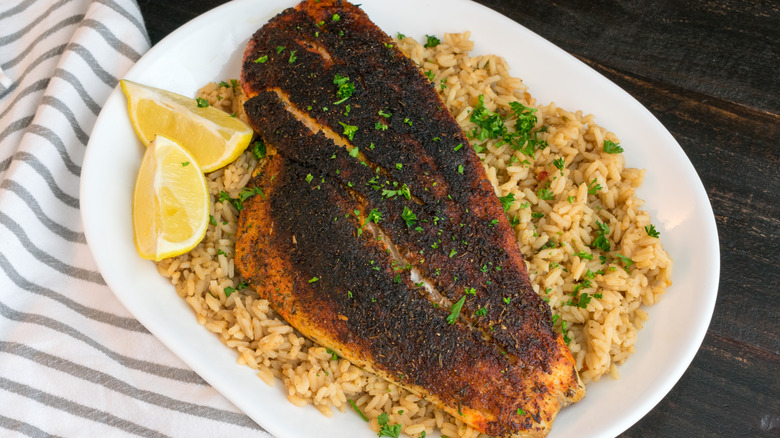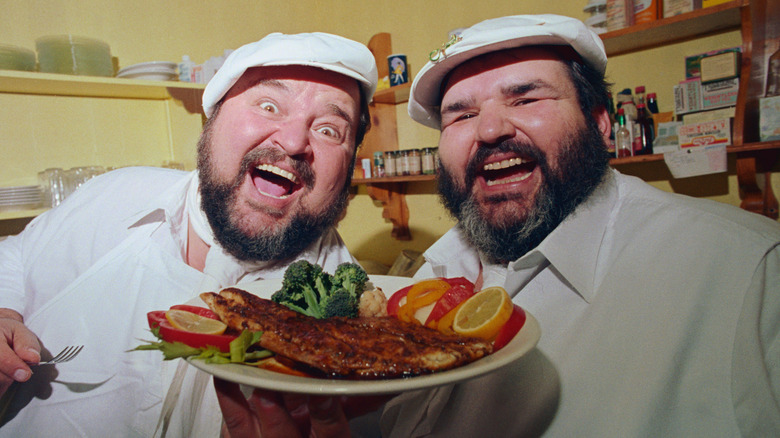We Have New Orleans To Thank For The World Of Blackened Food
We have New Orleans to thank for so many things food-related. The Crescent City is home to some of the most delicious and diverse food anywhere in the world, and while it works hard to maintain its place in the ever-evolving culinary landscape, New Orleans values its roots. Cajun and Creole food can still be found on most street corners in some form. Po-boys, red beans and rice, and jambalaya are all iconic dishes that grace menus across the city. But another type of food that originated in New Orleans became such a trend in the 1980s and '90s that restaurants across America began serving it, and folks were trying their hand at home recipes. We're referring to blackening, and it's as popular a cooking technique today as it was when chef Paul Prudhomme popularized it more than four decades ago.
Blackened food shouldn't be equated with charred food. Blackened as a culinary term refers to food (typically fish, chicken, and seafood) that's covered liberally with spices and cooked at a very high temperature. Paprika, onion powder, garlic powder, salt, cayenne, and black pepper are staple ingredients in blackening seasoning. In addition to adding distinct flavor, these spices become seared, resulting in a rich, toasted coating that brings out the distinct piquant of Cajun food. The blackening process mimics the grilling process, and that's exactly what Prudhomme set out to do when he unveiled his blackened redfish in 1980.
Why do we like blackened food so much?
When Prudhomme opened K-Paul's in 1979, he already had some grilled fish recipes under his belt, having been an executive chef at the famed Commander's Palace for several years. Absent a grill at K-Paul's, Prudhomme began experimenting with cooking his redfish on very high heat in a cast iron skillet. The blackened recipe was a slam dunk, and within weeks the line at K-Paul's was out the door, and (Nola) blackened food eventually became emblematic of Cajun cuisine. But why is blackened food such a hit? It has to do with the Maillard reaction — the redistribution of sugars and amino acids in the cooking process that creates browning. It's the reason we like the brown bits on grilled meat or the crispy, somewhat burnt edges on a chocolate chip cookie.
As blackening food gained traction as a cooking method, menus all over New Orleans were integrating blackened dishes. Today, we see dishes such as blackened chicken alfredo, blackened shrimp tacos, and blackened alligator bites. (It's okay, alligator meat is delicious. It's leaner than nearly all other conventional meats and takes on blackened spices beautifully. If you're in the Big Easy, grab some alligator-on-a-stick while you walk the French Market.) Blackened food remains a New Orleans staple, but try a recipe at home. Instead of barbecuing that chicken, try it blackened. Or how about some blackened salmon? Grab your spices and get creative, in the spirit of New Orleans and the late, great Paul Prudhomme.

